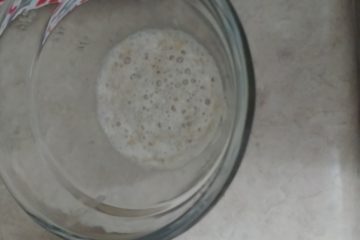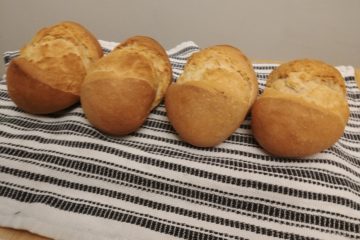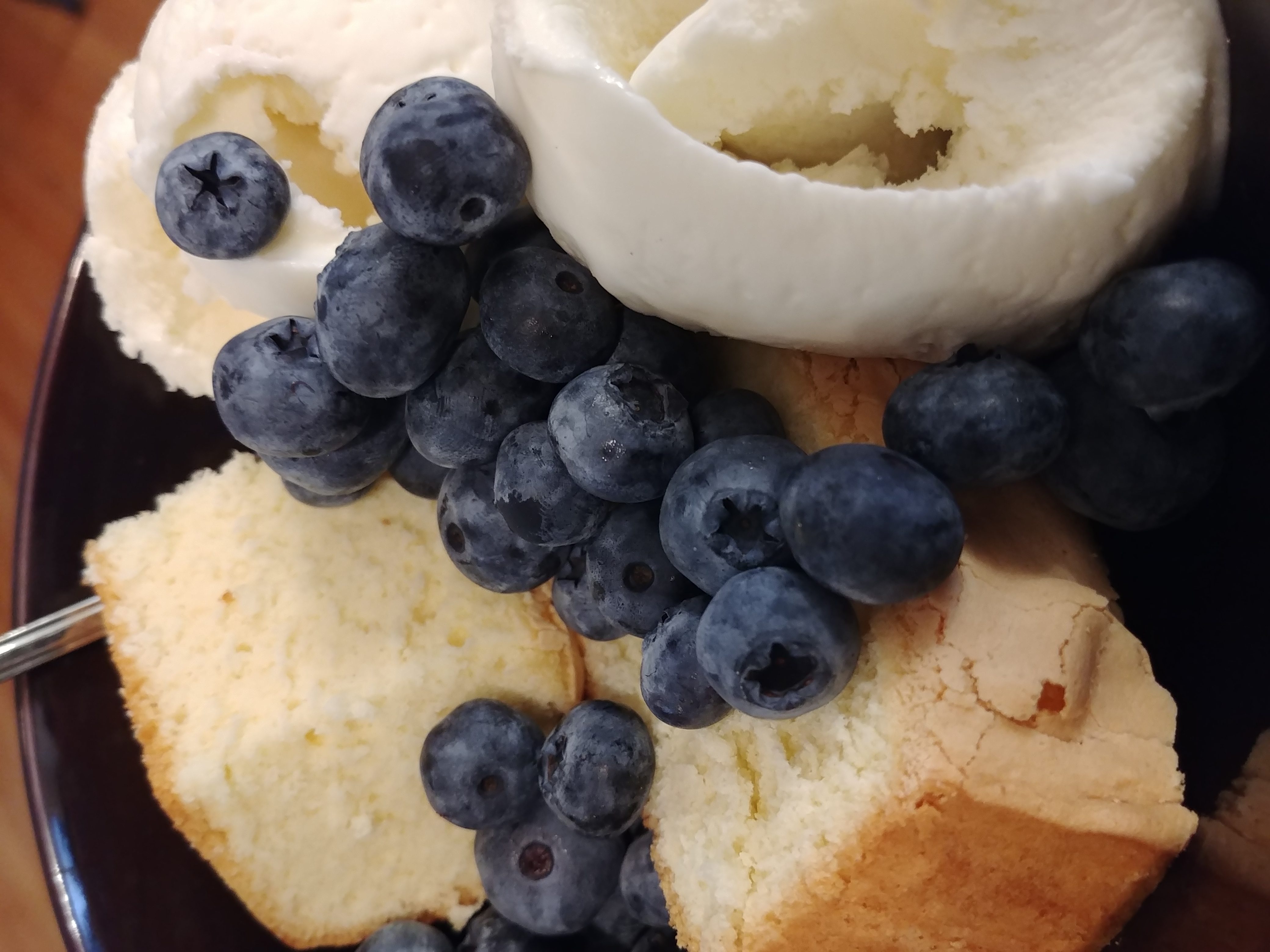1.
2.
In June of 2009 my lady and I entered the Sealion War A&S competition. The theme was “War Rations”. We salted venison and salmon, then baked the salmon into a pie and grilled the venison. I’ll be giving snippets from the documentation here and attaching the full documentation at the end.
Introduction
Competition
In war, the need to keep your troops well fed is an important necessity, but the long distances travelled to each battle requires some careful preservation and selections of such foods. As such the science points will be the best representation of period war rations. Points will be awarded to the rations that provides the best balance of nutrition/energy, best execution, and best documentation.
Supply Train
The supply train seems to have been a key part of medieval armies. The failure to cut off the English supply train during the siege of Orleans in 1429 for example nearly cost the French the city, and without aid from Jeanne d’Arc it would have (Kibler and Zinn). In the 13th century supply trains were so vital to the function of an army that Florence had a special guard unit simply to protect it (Nicolle and McBride). For this reason we have decided to focus ourselves on things that may have been carried in a supply train and cooked along the way.
Brief Outline
We have chosen to present two dishes, venison with a ginger and pepper basting sauce, and salmon pie. Both the venison and the salmon will be salted to preserve them, and then cooked. The venison will show an example of a meal which could be quickly and easily prepared at the end of a day with supplies from the wagon train and the preserved meat. The salmon pie gives us two examples of preserving food. The first of course is the salted fish, the second though is the pastry which could have been cooked in the coals of a fire in the morning and then eaten later that day, the next day, or even several days later if needed.
Venison
The syde of a dere of hie grece.
Wesch hem, do hem on a broch.
Scotch hem ovyrtwarte & ayenne crosswyse in the maner of losyngys in the flesch syde.
Rost hym: take redde wyn. poudyr of gynger. poudyr of pepyr & salt, and bast hit till hit be thorow.
Have a chargeour undyrneth & kepe the fallyng. and bast hit therwith ayene.
Then take hit of & smyte hit as thu lyst & serve hit forth. (Hieatt)Venison spitted (broch)
Slice lozenge shapes in the meat to tenderize
Mix red wine, powdered ginger, salt, and pepper for basting
Roast it over fire and baste it frequently
Carve it (smyte) as you would like and serve
We had to make several adaptations to this to suit our purposes. First we are using salted venison (see section on preservation of venison). As we are using salted venison we must first parboil it in water and wine vinegar (also see section on preservation of venison). Second we are using pre-cut pieces of venison. This is being done for a few reasons. We didn’t want to roast an entire venison haunch, as we didn’t know about the competition in October, and it is prohibitively expensive to purchase that amount of venison. Also we wanted to salt the venison ourselves, which decreased the amount of venison we would be able to use as we lack barrels. And finally, although it would be amusing to feed a large number of the Seagirt forces, we opted to only make enough for the completion, and ourselves.
- Salted Venison
- Pork/Bacon Fat or Lard
- Wine Vinegar
- Water
- Basting Sauce
- 2 cups of Red wine
- Powdered Ginger
- Pepper
- Salt
- Take the salted venison and parboil it in 1 part water and one part wine vinegar for 1-2 hours until soft, but not cooked
- Remove, pat dry
- Mix together basting sauce ingredients
- Marinade venison in the basting sauce for 2-3 hours
- Grease grill with pork fat or lard
- Sear meat for 30-60 seconds
- Decrease temperature of grill and cook, basting frequently and turning as needed
- Serve with remaining basting sauce
Salmon
Diz ist ein gut spise von eime lahs (This is a good food of a salmon)
Nim einen lahs. schabe im abe die schupen. spalde in und snit in an stücke. hacke peterlin selbey. Nim gestozzen yngeber pfeffer enys saltz zu mazzen. mache eynen derben teyk noch der groezze der stucke.
und wirf daz krut uf die stücke. und bewirke sie mit dem teyge. kanst du sie gestemphen in ein forme
daz tu. so mahtu machen hechde. förheln brasmen und backe eigliches besunder in eime teyge. ist ez
aber eins fleischtages. so mahtu machen hüenre, rephüenre, tuben und vasande mahtu machen. ab du
hast die formen.Take a salmon. Scrape off the scales. Split it and cut it into pieces. Cut parsley (and) sage. Take ground ginger, pepper, anise. Salt to mass. Make a dough (possibly freshly made as opposed to sourdough) also the size of the piece (of salmon). And throw the herb on the piece. And surround it with the dough. Stamp it in a form if you can. Thus you may make pike (and) trout. And bake individually in a dough. However, if it is a meat day, then you may make hens, partridge, pigeon and pheasant. If you have the forms, and bake them in fat or boil in the forms. Take from the breasts of the hens or other good meat. So will the art be the better and do not oversalt. (Atlas)
Hot water Pastry
- 1 lb(2 cups) Flour
- 1 tsp. Salt
- 1/2 lb. Lard/butter/fat
- 1/2 cup Boiling water
- Sift together salt and flour
- Rub a tablespoon of the lard into the flour and salt with your fingertips.
- Take the remaining lard, and add it to the water.
- Heat the water over med. heat until it just breaks a boil, and the lard is melted.
- Make a well in the flour, dump in the water and melted lard, and stir quickly with a wooden spoon to combine.
- Cover with a cloth to keep it warm, and let the dough rest for 10 minutes or so in a warm place.
- Roll out dough
(Finn)
Salmon Pie
Wash the salted fish in brine, and then soak in water for 10-30 minutes to freshen it before using.
- 1 lb. salmon fillets
- 1 tsp. Parsley
- 1/4 tsp. Sage
- 1/4 tsp. Ginger
- 1/4 tsp. Salt
- 1/8 tsp. Pepper
- 1/8 tsp. Anise
- Remove any skin from salmon.
- Roll out half of pastry on a floured surface, and place salmon in the middle.
- Add remaining ingredients and cover with the rest of the pastry.
- Seal edges with water and cut to shape if desired.
- Bake at 350° until golden – about 40 minutes.
(Myers, Salmon Pie)
Final Notes
We would like to acknowledge Daniel Myers (Master Edouard Halidai) for the asset his website, Medieval Cookery, has been during this process. The site gave us some of our first thoughts in this project. We would also like to recognize David Elson (Master Delbert von Straßburg) for his work on medieval pies as a preservation method.
That’s the short version. If you’d like to slog through the whole thing (and I do mean slog, it was my first SCA research paper, and I pretty much discus my entire process for arriving at the final recipes), you can take a look at that here: Preserved Salmon and Venison. We won this competition.


